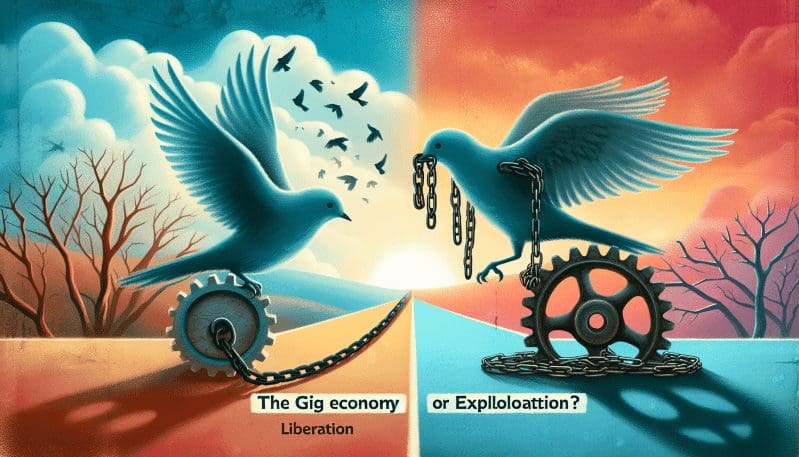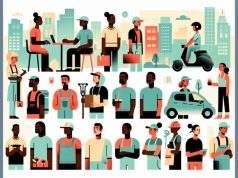In the bustling streets of New York, a new breed of workers weaves through the fabric of the city’s economy. They are the faces of the gig economy: freelancers, independent contractors, and part-time workers who hop from job to job, seeking the independence of the open market. Yet beneath this allure of freedom lies a contentious debate: does the gig economy represent a new horizon of worker liberation, or a shadowed landscape of exploitation? The Work Times delves into this paradox, dissecting the complexities that define the future of work.
New York serves as a microcosm of the gig economy’s explosive growth. According to recent statistics, millions of Americans are now participating in gig work, enticed by the promise of flexible schedules and a sense of autonomy. For some, this arrangement is the embodiment of the American Dream, enabling them to juggle multiple interests, avoid the constraints of a traditional 9-to-5 job, and be their own boss.
However, this glossy veneer of independence often obscures the harsher realities of the gig economy. The freedom to choose when and where to work does not equate to freedom from economic hardships. Gig workers frequently face unpredictable income streams, lack access to employer-provided benefits like health insurance, retirement plans, and paid leave, and grapple with the absence of job security. In essence, the risks traditionally borne by businesses have been transferred to the individual worker, often without the safety net afforded by stable employment.
The tales of those navigating the gig economy are as diverse as the city itself. Maria, a freelance graphic designer, relishes the ability to work with various clients, but admits that the constant hunt for the next gig can be exhausting. John, a rideshare driver, appreciates setting his own hours but feels the strain of working long shifts to make what he once earned in a more traditional role. These personal stories echo a larger narrative of precariousness that underpins the gig economy.
Legally, New York is grappling with how to classify gig workers. Are they independent contractors or should they be considered employees with corresponding rights? This classification has significant implications for worker protection and corporate responsibilities. The state is taking steps to address these issues, including new regulations for app-based companies and proposals for portable benefit systems that would bridge the gap for workers without traditional employment benefits.
Economically, the gig economy is a double-edged sword. On one hand, it’s a powerful engine for innovation, entrepreneurship, and economic growth. On the other, it creates a labor market that can be ruthlessly competitive and unstable. With the absence of minimum wage guarantees or overtime pay for most gig workers, income inequality threatens to deepen.
Sociologically, the gig economy has altered the cultural landscape of work. The traditional bonds that tied workers to their employers, such as loyalty and long-term career development, are fraying. In their place, a transactional mindset has emerged, where work is viewed as a series of short-term engagements with no expectation of continuity.
Amid these multifaceted challenges, policymakers are called upon to chart a course that ensures the gig economy is both innovative and just. Proposals for policies include establishing minimum standards for gig work, crafting legislation that balances flexibility with security, and fostering an environment where workers can organize for their rights without fear of reprisal.
In conclusion, the gig economy in New York is a paradigm of the modern labor market—dynamic, uncertain, and under intense scrutiny. As The Work Times continues to investigate the evolving narrative of work, it is evident that the question of whether gig work represents liberation or exploitation is not a dichotomy but a spectrum, with real lives and livelihoods hanging in the balance. The task at hand is to confront the gig economy’s challenges without stifling its potential, guiding it towards a future where flexibility does not come at the cost of fairness.




























